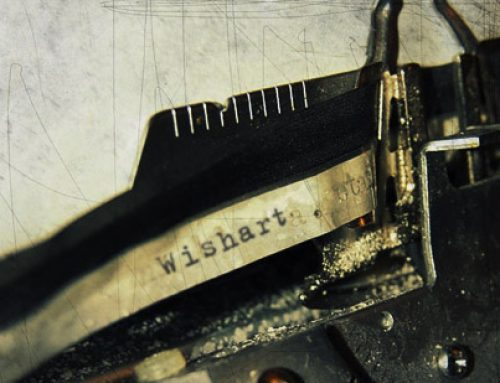Many Wisharts have drowned over the years, either through tragedies at sea, or childhood misadventure. The following article published in the Sydney Morning Herald on 18 February 1868 concerns an engineer named John Wishart (WIS0106), who was born on 28 June 1806 in Anderston, Glasgow and sailed from Greenock on 18 June 1842 aboard the Jane Gifford for Auckland, where he arrived four months later on 9 October. He was the third of eight children born to John Wishart, a wright who was possibly from Bute, and Agnes Barr. On 27 June 1836 John married Isabella Graham in Glasgow and they had a daughter named Agnes who was born a year later. Prior to emigrating John had been working as an engineer, and continued to do so when he arrived in New Zealand where he worked on steam ships between Auckland and Sydney. In 1857 John’s wife died in Sydney followed by his daughter nine years later. The inquest into John’s death provides an interesting insight into John’s life during his final years:
![]()
The City Coroner held an inquiry yesterday, at the Observer Tavern, respecting the death of a man named John Wishart, whose body was found floating in Sydney Cove on Sunday morning by a sailor named Perry Johnson. James Kent, engineer of the steamer Kembla, identified the body as that of John Wishart, who was an engineer by profession, and about 50 years of age; he last saw him alive between 12 and 1 o’clock last Saturday morning, on board the Kembla, on which vessel deceased had been engaged during the week effecting some repairs; deceased received his pay on Saturday, and appeared quite cheerful, sober, and well when he left the vessel. Constable Little, of the water police, stated that on searching the body at the dead-house, he found a purse containing 14s 1d, a few figs of tobacco, a pair of spectacles, and two certificates of competency as a practical engineer, signed by David Henderson, of Auckland; the body had apparently not been more than ten or twelve hours in the water. He observed a cut over the back of the deceased’s head, and another over the right eye he had inquiries with the view of tracing the deceased after he left the steamer Kembla on Saturday, but all that he had been able to ascertain was that he was last seen alive at his lodgings on Saturday night.
Ellen Sheedy, boarding-housekeeper, of Clarence Street, stated that deceased had been stopping at the house off and on for the last ten months; he paid her regularly; the last time she saw him alive was about three o’clock on Saturday last; he was then at her house, and paid her all he owed her, which was about £1; he was not sober at the time; he left soon after three o’clock, but did not say where he was going. Deceased told her on Friday evening that he had finished his job on the Kembla, and would receive about £5 12s for it. Dr Shaw stated that on making an examination of the body he observed a wound of an incised character over the right eye, nearly into the bone, the was also an abrasion of the lip, ad an incised wound on the back of the head; the wounds were all fresh, and must have been inflicted at or shortly before death, he had by direction of the coroner since made a post-mortem examination; he found that the wound over the eye did not extend into the bone; the skull was perfectly sound. The result of his post mortem examination confirmed him in his opinion, and demonstrated conclusively, that death had resulted from asphyxia by drowning. An open verdict of found drowned was returned by the jury.

